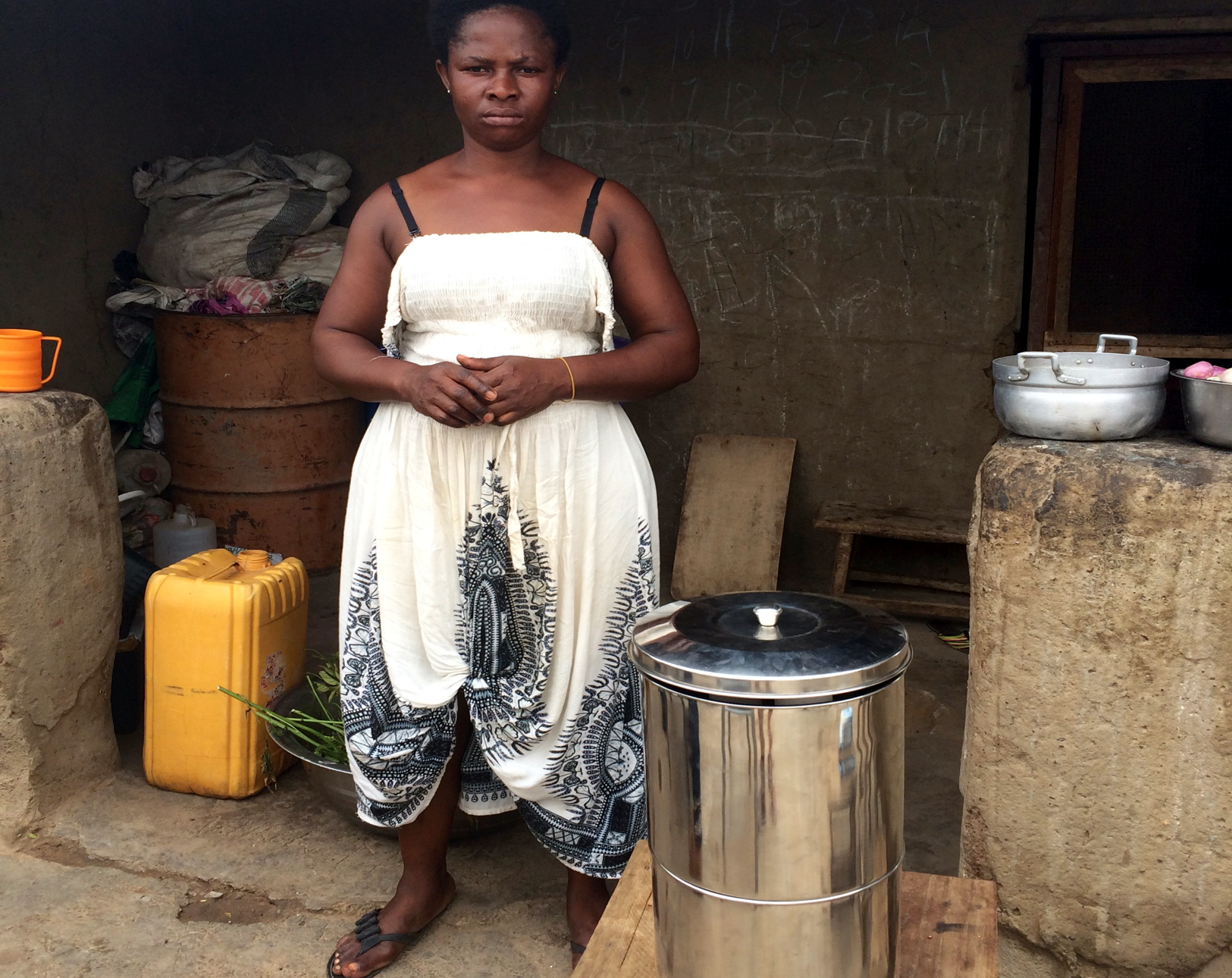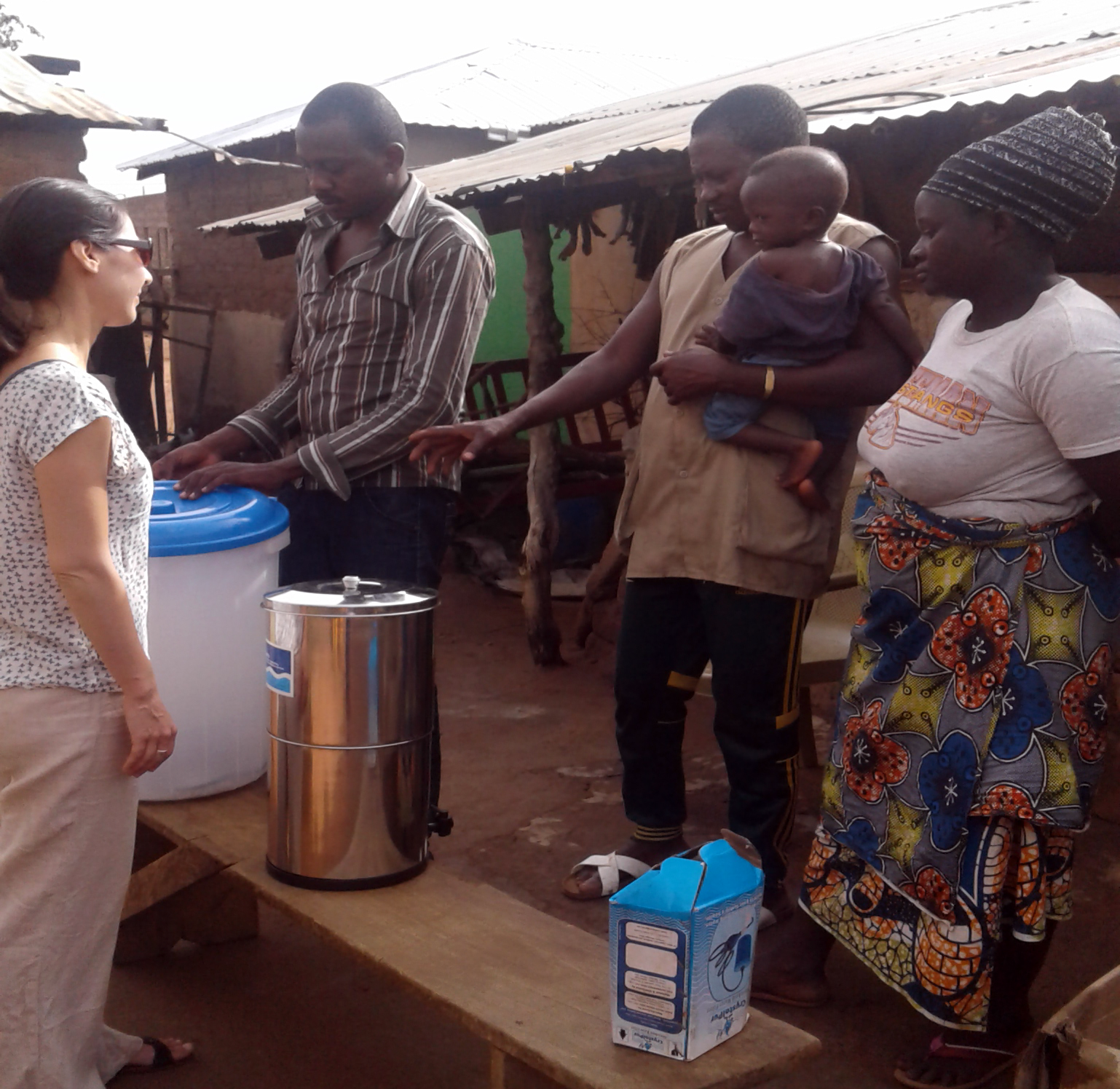Executive Summary
This case study supports and illustrates the theoretic factsheet "Human centred design" with practical insights.
Solutions for the people – a user’s perspective of HWTS in Ghana
Due to very poor sanitation infrastructure (improved sanitation stands at less than 20% in Ghana), contaminated water is prevalent in Ghana (CIA, 2018). Especially the northern part of Ghana (see Map) is in particular deprived. 32% of the 2.5 million residents of the 3 northern regions lack access to improved water sources. In this context diarrheal diseases are the third most commonly reported illness at health centres across the country with 1 out of 10 children dying before they reach their first birthday due to waterborne illnesses. Not only poor water and sanitation hampers the development of the region, but also over 25% of the population is trapped in poverty and lives on USD 1.25 or less per day and capita. To find solutions to improve this situation together with the people, iDE Ghana with the support of Antenna Foundation launched a human centre design study on HWTS in 2016 in the designated areas on the map below. The goal was to better understand the knowledge, attitude and practices of households towards water and to develop solutions for improvement and eventually plan interventions accordingly at a later stage.
Methods
To understand the latent user needs the research team applied HCD approach, split into hear, create and deliver phases and around the following topics:
- Water collection
- Water access
- Water storage
- Identifying and testing available water technologies
For the practical implementation, the study included the following methods: fieldwork, analysis and synthesis of the findings from the ground and ideation, as shown in the scheme below:
"Hear" phase – Learning from the ground

The study set-up included different aspects. After initial interviews with water experts that are familiar and experienced with the Ghanaian water context, a 2-week field trip has been executed in the northern part of Ghana to learn and experience from activities on the ground. As HCD research is not based around desk research only the iDE research team went on-site in order to gather information and better understand the very context of water at the household level. In each of the visited regions urban, peri-urban and rural settings have been observed. With help of local people, the different available HWTS solutions were identified on the different markets (retail shops, market stands etc.). In order to understand what people’s perceptions about these particular solutions are and to understand their water use and storage habits, the research team has in total been interviewing 18 current users, non-users or ex-HWTS users (all families), 2 schools, 2 HWTS product vendors and a HWTS manufacturer.
The respondents were visited, interviewed and their daily habits observed. Meanwhile different particular HWTS solutions were offered for testing. While applying the solutions, contextual interviews were initiated along with active observations of users using the specific technologies in their daily life. The technologies were then left with five different households. After six days to two weeks, the households were visited a second time and asked to share their experiences and usage with the researchers. The users were also asked about their perceptions and desired purchase process. These revisits were unannounced in order to avoid triggering or influencing of user behaviour. Probing with real technologies was done in order to observe the level of interest and to understand what aspects were important to users during a potential selection or purchase process. Set up and usage were also important factors in order to gain insight into true, viable consumer-desired and user-friendly products. In addition to people’s personal perceptions the general context of available water sources (tabs, private wells, water sachets), price structures of available water, the water quality and quality perception of people, cultural habits and traditions have been observed. Subsequently the gathered information was structured and synthesised.
"Create" phase – Making observations tangible

To better structure the insights from the ground and be able to make comparisons on the technologies, the following criteria were applied:
- Familiarity / temperature of water: Familiarity of materials and handling applied / potential change in water temperature due to filtration
- Capacity of the filter, for how many people is it feasible to use?
- Price in the local market
- Breakability / ability to replace is it likely to break and if yes can parts be replaced, respectively are spare parts available locally?
- Flow rate / performance of the HWTS, how many liters are treated per hour?
All possible solutions were displayed in a graph rating the advantages and disadvantages (see Rating of user’s HWTS perception) of the different products and its applicability for the specific context were evaluated and recommendations given for improvement based on the gathered lessons learnt and insights from the ground.
These insights allowed a categorisation of feasibility criteria and revealed that in the north-Ghanaian context price, capacity and durability of the technology are prioritised by the user. Reflecting the observation, that HWTS are a major investment for families, leaving them less money for other expenditures for daily life such as food and school fees. It became apparent, that a HWTS technology solution should be affordable, durable and offer agood treatment capacity.
"Deliver" phase: Follow-up / next steps
Based on these findings, the next step in the development cycle is to start the delivering process, including co-creation sessions with local stakeholders and actors in order to develop ideas for new products and services based on the findings of the study and on newly generated ideas from the ground. In addition to this local survey, further existing solutions or through the process adapted approaches should be tested on the ground to find a best fitting HWTS solutions for safe water for the whole country.
Lessons learnt from executing HCD research in Ghana
The HCD case study reveals a multitude of insights and is as approach very innovative: Asking the users’ perspective on existing products to continuously improve the definition of the product’s unique value proposition is a promising process to sustainably increase product and technology adoption and use in a specific market. The figure below shows the proposal of business models to be implemented to reach the last-mile consumer.
During the implementation of the evaluations, it was extremely challenging for the project team to find three different, commercially available technologies to test. In the northern regions of Ghana, there are no dedicated retail outlets or obvious sales channels for HWTS with the exception of the Kosim ceramic filter, which is manufactured and sold locally in Tamale. In particular, chlorine tabs are not readily available but sold only in certain pharmacies. The study revealed that no household is using it – reflecting that the HWTS market in northern Ghana is still very immature.
Guidance is critical but works: most users displayed a lack of knowledge, familiarity and misunderstanding of HWTS products and will need demonstrations, thorough instruction and monitoring to avoid misuse. People are unaware of water safety but if they are informed, they are interested in improving and maintaining the quality of their water.
Free product expectation: Household and school users who took part in NGO or public sector HWTS initiatives over the last 10 years have developed a dependence on donors to supply the technologies and replacement parts free of charge. These past experiences have instilled a general lean-back attitude in users when it comes to clean water technologies.
Slow flow rate is the biggest pain point for all users. Either way did the first-time users try the
Price is the most important factor when choosing a technology, and even with better options, the most affordable filters were chosen. HWTS are perceived as a big expense therefore users want assurance, durability, longevity (or replacement). There is willingness to pay USD 5 – USD 25 for a technology; which is the ideal range for users when asked. Payment in instalments can make this feasible for people, with flexible price instalments because people have little to no disposable cash especially in rural areas.
Following the above lessons learned, and analysis of different options, the tulip filter was found to best fit the design principles in this study. There is not a sufficient business case yet to design an intervention around promoting the product. Further research is recommended to validate the findings in the North of Ghana and explore whether there is sufficient demand and available supply in the South of Ghana to merit investments into a programme promoting this particular technology.
Recommendations for applying HCD
- Applying HCD in the context of HWTS allows potential solutions to be co-created with end users to reach a maximum of acceptance and feasibility within the specific area of intervention. This very bottom-up approach bears high potential and reflects a new path towards sustainable access to safe water and is highly recommended to be replicated in other contexts around the globe.
- The applied HCD approach could be replicated for any technology and business model definition in another country. It can also be further developed by different actors and tailored towards the specific needs on the ground. Amongst them, iDE Cambodia has recently launched a service to replicate and adapt the methodology to any country and product. Would you be interested in their approach, please visit iDE Ghana.
Illustrative example: the ideal customer purchase process
People were open to both going to a shop (POP) or purchasing at the community level. They also liked the idea of going to the market or a local shop to purchase, replace or acquire support. As long as people are aware of the need and availability of the HWTS product, people are willing to go to a site away from their home.

